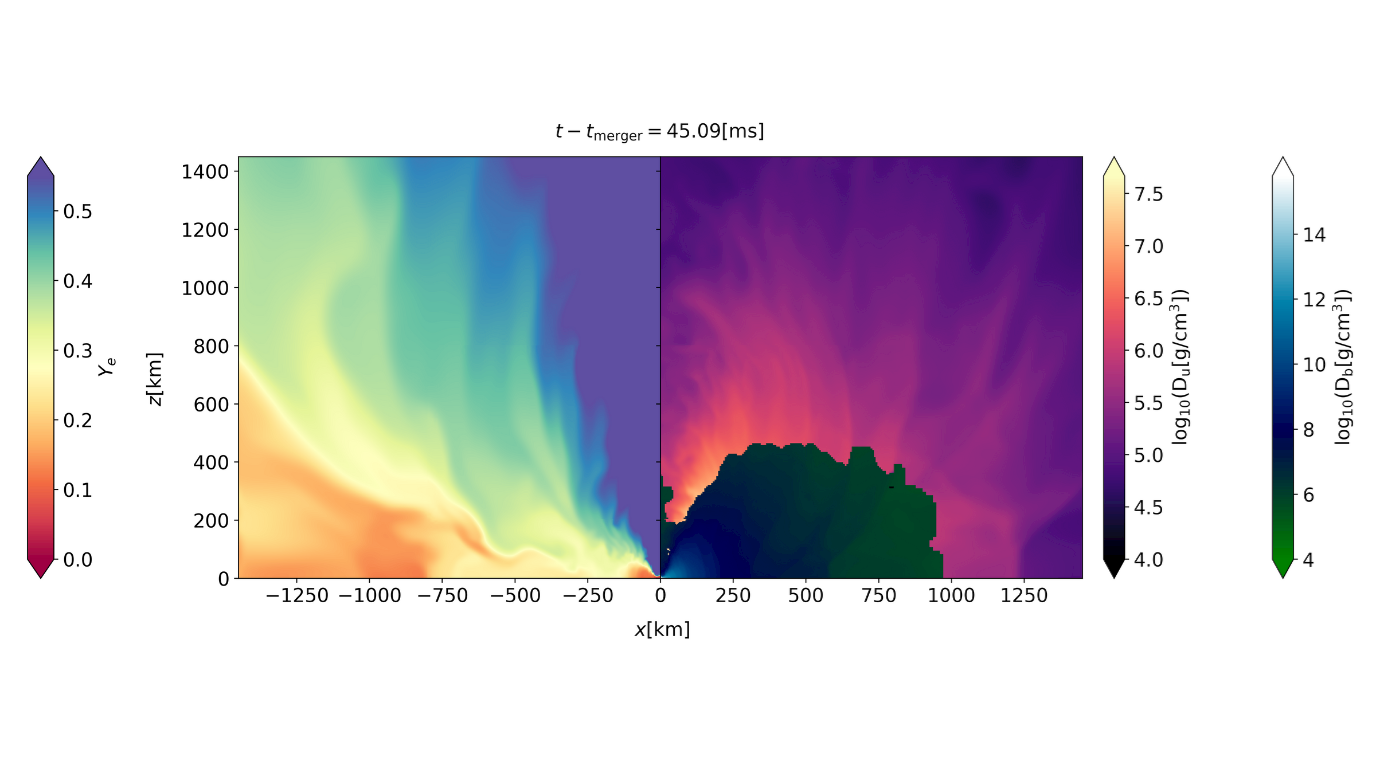Federico Schianchi (University of Potsdam)
Since the first observation of a binary neutron star merger in 2017 through both gravitational and electromagnetic signals, General Relativistic simulations of such events are getting a central role in the development of multimessenger astronomy. These astrophysical events are thought to be the most important source of heavy elements in the Universe, which are synthesized via rapid neutron capture in the matter ejected during the merger. The resulting beta decay produces an electromagnetic transient know as kilonova. The gravitational signal produced by these mergers is so far well reproduced by our simulations, at least up to the late inspiral. However, the electromagnetic one is much more challenging due to the increasing complexity of the physical processes involved. Most importantly, we need to know the electron fraction of the matter ejected during and shortly after the merger. This is highly dependent on interactions between baryons and neutrinos.
My work consists of the implementation of a module within our BAM code, that tracks the propagation of such particles and their interaction with matter. The aim is to get a more accurate estimate of the ejecta properties, mostly of electron fraction, with the scope of producing more realistic kilonova light-curves and nucleosynthesis yields from our simulations. In the last part of the talk I will give a brief summary of the improvements that my group is carrying on in the BAM code.





















